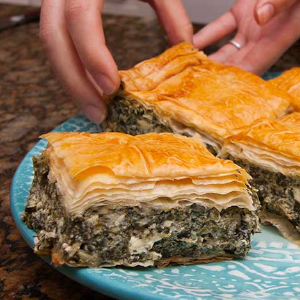Bounded on three sides by water – the Ionian, Aegean and Mediterranean Seas – and on the fourth by mountains, Greece is a history buff’s and vacationer’s paradise. It’s also a food lover’s paradise, where you’ll find dishes you won’t see anywhere else, made from ingredients you’ll see everywhere else around the Mediterranean…
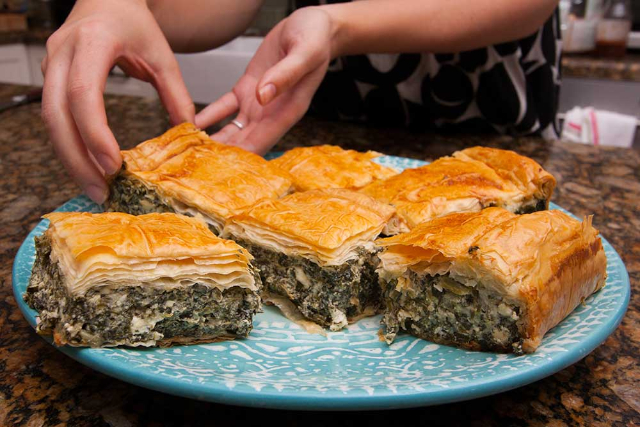 Spanakopita: One of the signature Greek Dishes known round the world…
Spanakopita: One of the signature Greek Dishes known round the world…
Greek food is founded on the three pillars of Mediterranean cuisine: Wheat, wine and olive oil, which trace their roots back to ancient times. The Byzantine Empire occupied what is now Greece plus much of the surrounding territory. According to Wikipedia, the Byzantine influence was responsible for the flowering of what we now recognise as Greek cuisine:
“Byzantine cuisine was similar to ancient cuisine, with the addition of new ingredients, such as caviar, nutmeg and basil. Lemons, prominent in Greek cuisine and introduced in the second century, were used medicinally before being incorporated into the diet. Byzantine cuisine benefited from Constantinople’s position as a global hub of the spice trade.”
In later eras, Roman and Ottoman influences added to the rich fabric of Greek dining.
Of course, with all that coastline, and incorporating thousands of Aegean islands, fish and seafood have always been central elements of day-to-day Greek cuisine.
On our menu today…
Kolokithokeftedes: All that just to say ‘Zucchini fritters’! A popular starter found in most Greek eateries.
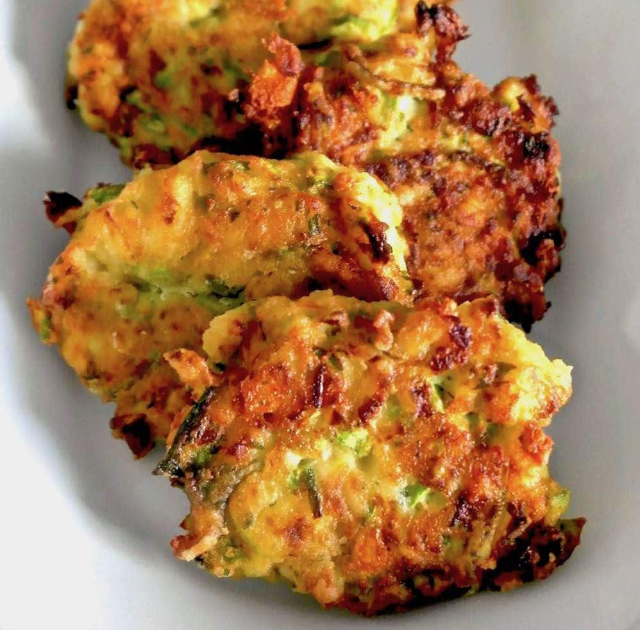
They’re crispy and golden on the outside and creamy smooth, thanks to Feta Cheese, on the inside. A dash of mint makes for a unique, unforgettable flavour.
Dolmadakia: Stuffed Grape Leaves are a well-known Greek specialty. These are smaller, appetizer-sized versions of full-fledged Dolmades, which are often served as a main dish. Authentic Dolmas and Dolmadakia are stuffed with ground lamb and rice. Outside Greece, you’ll probably get ground beef. Herbs and spices used are those most often associated with lamb; some savoury and some sweet.
Choriatiki: Classic Greek Salad – a part of almost every Greek midday or evening meal – can be enjoyed as a starter or a side. Composed of tomatoes, olives, cucumber and feta cheese, this salad is served undressed. The diner is invited to apply their own embellishment using salt, pepper and Olive Oil provided on every Greek table.
Gyros: Here’s a Greek food that has echoes throughout western Asia and the Middle East. Meat (classically lamb) us roasted on a vertical spit, sliced thin and wrapped as a sandwich in a Pita. The meat is usually topped with various combinations of onions, lettuce, tomatoes and a yogurt-based sauce. It’s hand food, street food – and its roots can be traced back to the Byzantine era.
Souvlaki: Every west Asian and Mediterranean culture has a showcase meat-on-a-skewer dish. Souvlaki is Greece’s contribution to the pantheon of skewer dishes. It can feature lamb, pork or chicken.
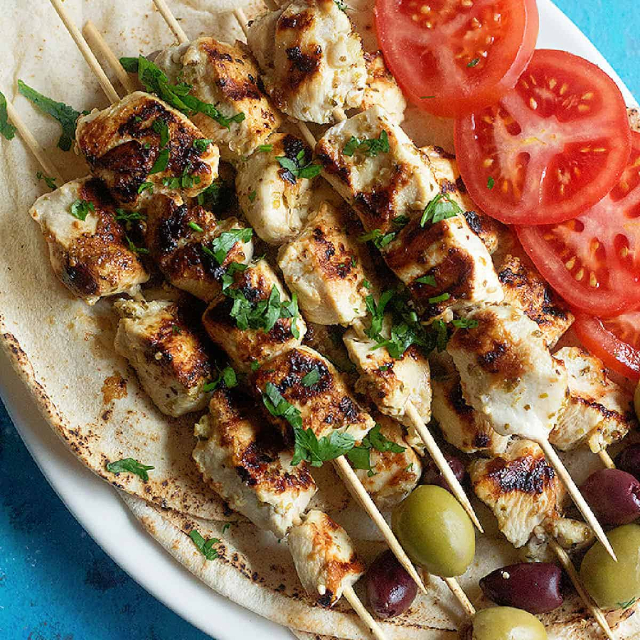
The meat is traditionally marinated with olive oil and rich, bold seasonings and grilled over hot coals. It’s a popular street food, cradled in a Pita and topped with onions, tomatoes and Tzatziki Sauce. It is also served as part of a full, plated meal, with Greek Salad and Roasted Potatoes.
Keftethes: Greek meatballs are are another double-duty dish, like Dolmades. Small ones are served as appetizers with the ubiquitous yogurt sauce and Pita. But they are also served in a larger form as a main, with plain Basmati Rice on the side and a simple Feta Salad. They are classically made of lamb with lamb-friendly spices, but as with other Greek dishes, beef may be substituted where lamb is either prohibitively expensive or not generally available.
Moussaka: Some folks with little imagination call it ‘Greek Lasagna’. I guess there are some key similarities…
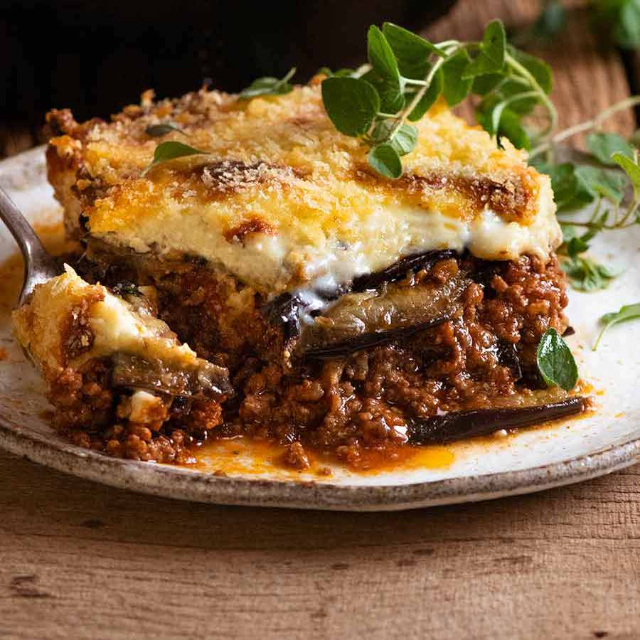
Moussaka is composed of layers of ground beef cooked with Tomatoes and spices alternated with layers of eggplant and topped with thick, creamy Béchamel Sauce. It’s a fixture on Greek restaurant menus and at every big Greek family gathering.
Spanakopita: This classic Greek Spinach Pie is enjoyed in all menu roles: Starter,l snack, or main dish. Good thing it’s simple to make. Wilted Spinach is mixed with Feta cheese, butter and olive oil and baked in a Phyllo Pastry crust unto golden brown on top. Cut it in squares and dish it out.
Sanganaki: This is beloved Greek dish that is composed of only two ingredients: Halloumi Cheese and flour. It’s a classic starter with a definitely tart cheesy flavour tinged with a muted sweetness. The only other dish I’ve come across that even comes close is Indian Fried Paneer. But the flavour bears no relation to Sanganaki.
Tzatziki: Remember that unbiquitous yogurt-based sauce mentioned in several places above? The most popular iteration is Tzatziki – plain yogurt, garlic, olive oil, often diced cucumber, and lots of finely chopped fresh dill.
Big history, big food…
There are lots of other Greek dishes you should seek out and try! As with the above, you’ll see that many are signature Greek versions of cooking styles and techniques found all over western Asia and the Middle East. There’s the Byzantine influence again! But there are many more that are uniquely Greek. Tomorrow, we’ll look at Greek deserts and baked goods – and there are dozens!
~ Maggie J.

